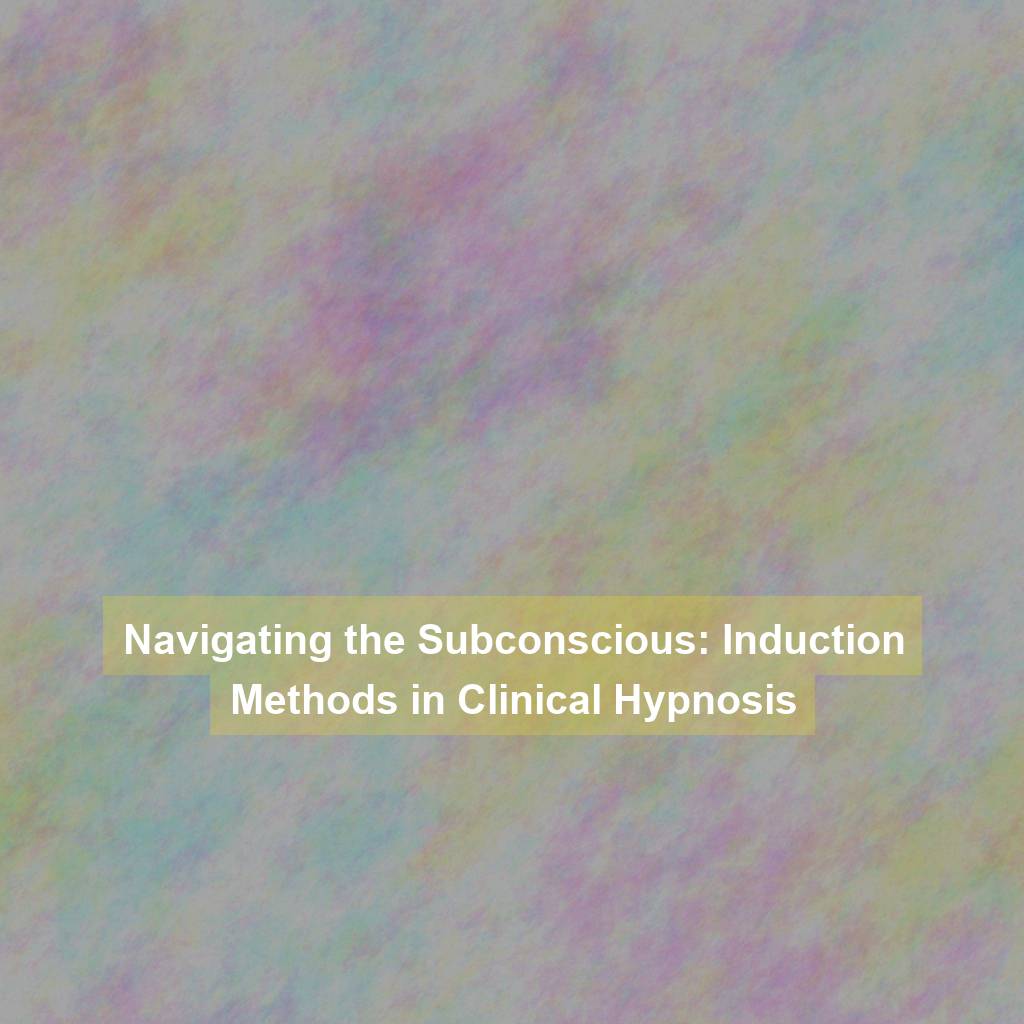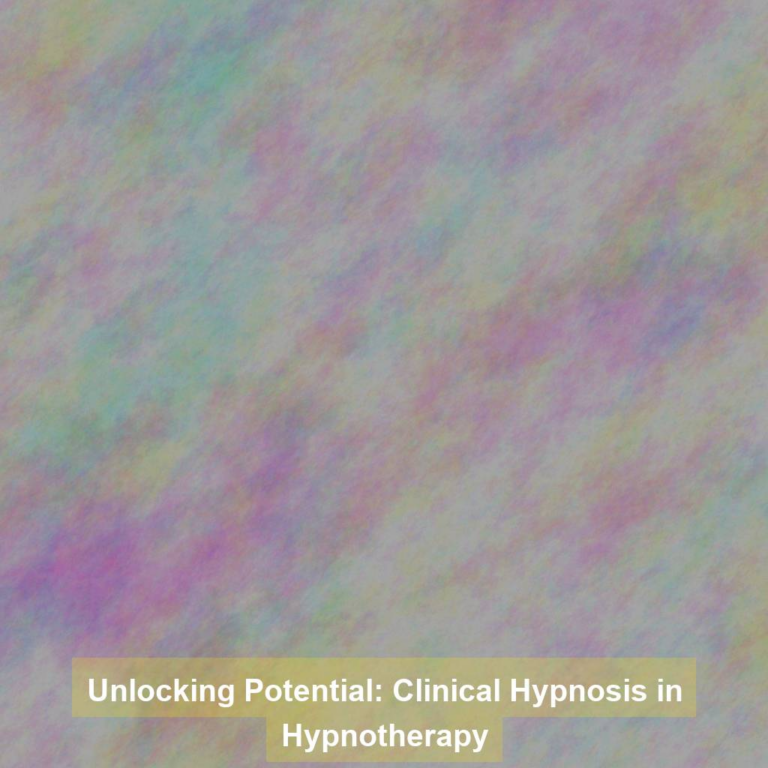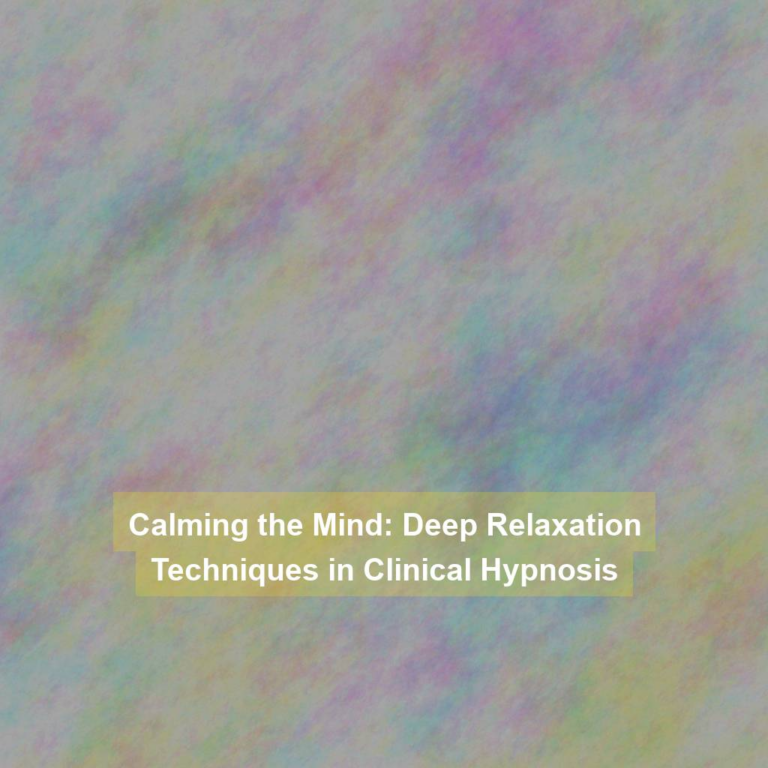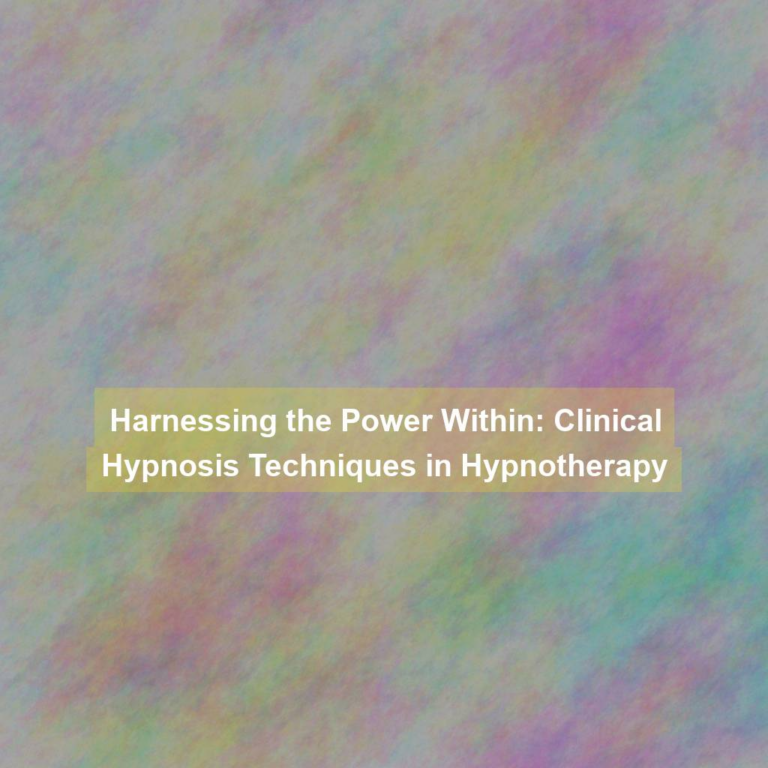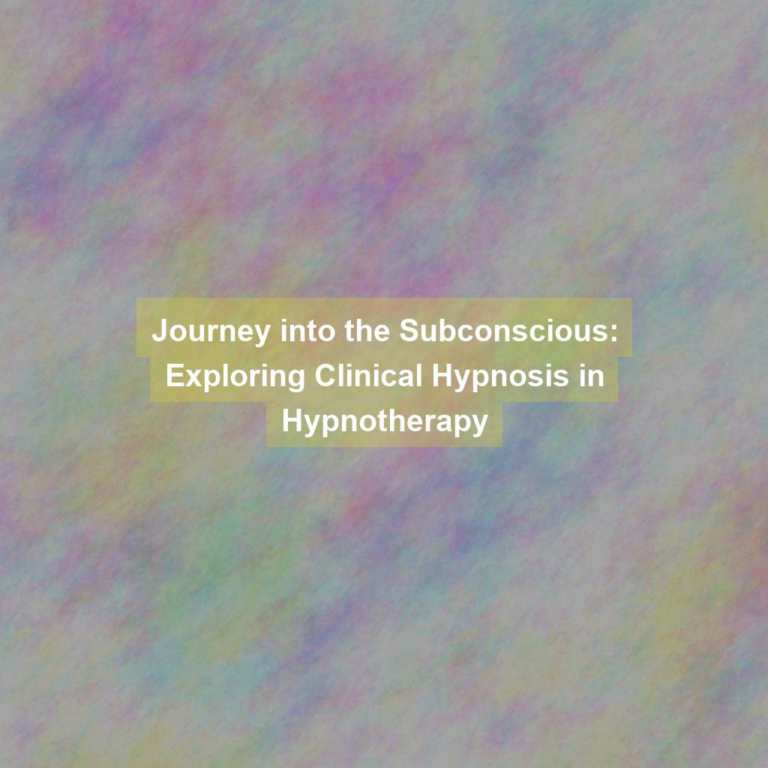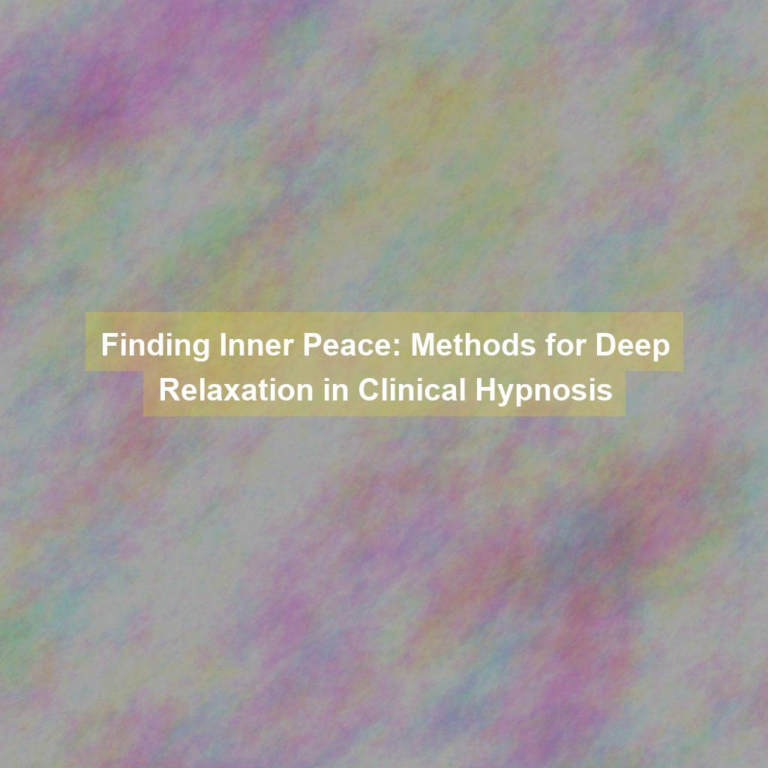As you journey into the labyrinth of the mind, you’ll find that navigating the subconscious is a delicate yet powerful art. In the realm of clinical hypnosis, induction methods play a pivotal role in unlocking the hidden potential of the subconscious.
From progressive muscle relaxation to non-verbal induction methods, the arsenal of techniques is vast and varied. But how do these methods work, and what makes them effective?
Let’s unravel the intricacies of induction in clinical hypnosis and explore the fascinating ways in which the subconscious can be accessed and influenced.
Progressive Muscle Relaxation
To achieve deep relaxation, you can practice progressive muscle relaxation by systematically tensing and then releasing different muscle groups in your body. Start with your feet, curling your toes tightly for a few seconds, then releasing. Feel the tension melt away as you move to your calves, tightening the muscles, and then letting go.
Continue this process, working your way up through your body, including your thighs, abdomen, arms, and neck. As you release each muscle group, focus on the sensation of relaxation and let any stress or tension dissipate. This technique helps you become more aware of the physical sensations associated with tension and relaxation.
Visualization Techniques
Visualization techniques involve mentally picturing specific scenes or images to promote relaxation and focus. When using visualization in clinical hypnosis, you can start by finding a quiet, comfortable space. Close your eyes and imagine a peaceful, serene location. It could be a tranquil beach, a calming forest, or any place where you feel at ease.
Engage all your senses in this visualization – feel the warmth of the sun, hear the gentle sound of waves or rustling leaves, smell the fresh air, and see the vivid colors around you. As you immerse yourself in this mental imagery, allow your muscles to relax and your mind to clear.
Visualization can also be used to mentally rehearse positive outcomes or to visualize yourself achieving your goals. This technique can help you tap into your subconscious mind and create a sense of calm and purpose. With practice, visualization can become a powerful tool for managing stress, enhancing performance, and fostering overall well-being.
Eye Fixation and Blinking
As you move from engaging in visualization techniques to the exploration of eye fixation and blinking, you can utilize the power of focused attention and physiological responses to deepen the hypnotic state. Eye fixation involves instructing the client to focus on a specific spot or object. By doing so, the mind becomes absorbed in the visual stimuli, leading to a narrowing of attention and an increased receptiveness to suggestions. This technique capitalizes on the natural tendency of the brain to enter a trance-like state when fixating on a single point, making it an effective method for inducing hypnosis.
Furthermore, blinking can be integrated into the hypnotic induction process. As you focus on the client’s blinking patterns, you can encourage them to notice the subtle changes in their physiological responses. This heightened awareness of blinking can serve as a gateway to deepen the hypnotic state, as it allows the individual to become more attuned to their body’s automatic responses. By incorporating eye fixation and blinking into your hypnosis practice, you can harness the power of the subconscious mind and facilitate a more profound hypnotic experience for your clients.
Hypnotic Language Patterns
You can enhance the effectiveness of your hypnotic inductions by employing carefully crafted language patterns to guide the client into a deeper state of relaxation and receptivity. Using hypnotic language patterns is a powerful tool in clinical hypnosis. These patterns are designed to bypass the critical conscious mind and speak directly to the subconscious, allowing for a more profound impact on the client’s thought processes and behavior.
One effective language pattern is the use of embedded commands, where subtle directives are hidden within the conversation. For example, saying ‘as you continue to relax, you may notice your eyelids becoming heavier’ embeds the command to relax deeper within the sentence. Another powerful pattern is the use of presuppositions, where the language assumes the client’s response rather than asking for it directly. Phrases like ‘as you drift into a state of calmness’ presuppose that the client will indeed drift into a state of calmness.
Utilizing these hypnotic language patterns can significantly enhance the depth of trance and the effectiveness of your therapeutic suggestions. By carefully choosing your words, you can subtly guide your client into a state of heightened suggestibility, allowing for powerful therapeutic interventions.
Non-verbal Induction Methods
Engage the client’s non-verbal responses to facilitate the induction process, utilizing subtle cues to guide them into a state of heightened receptivity. Non-verbal induction methods are powerful tools in clinical hypnosis, allowing you to access the client’s subconscious in a non-intrusive manner.
Begin by observing the client’s body language and breathing patterns. Encourage them to relax by matching your movements to theirs, establishing a sense of rapport and trust. Utilize gentle hand gestures or nods to signal relaxation and promote a sense of calm.
Modulate the tone and rhythm of your voice to synchronize with the client’s breathing, creating a harmonious connection. Employ eye contact to convey reassurance and encouragement, fostering a deeper sense of relaxation and receptivity.
Non-verbal cues such as mirroring the client’s posture or movements can establish a subconscious connection, facilitating the induction process. By paying attention to the non-verbal responses of the client, you can guide them into a state of heightened receptivity, paving the way for a successful hypnotic induction.
Conclusion
In conclusion, navigating the subconscious through induction methods in clinical hypnosis requires a combination of techniques. These include progressive muscle relaxation, visualization, eye fixation, hypnotic language patterns, and non-verbal methods.
These methods can be effective in guiding individuals into a hypnotic state where they can access their subconscious and work towards achieving their therapeutic goals. It’s important for practitioners to be skilled in these techniques in order to help their clients harness the power of their subconscious mind.

